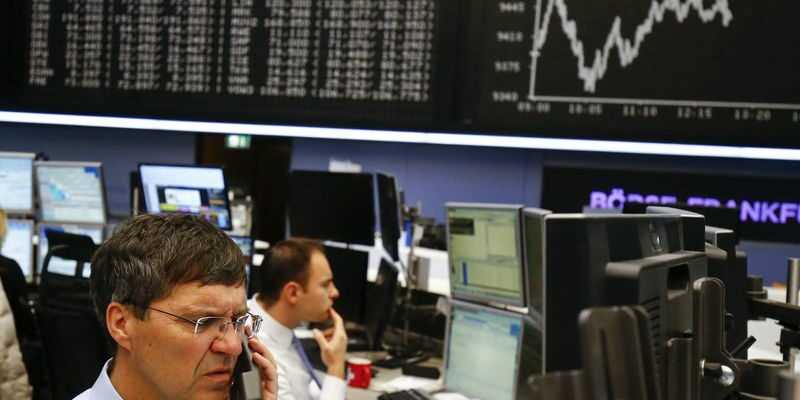The US State Department said on Sunday it was ordering the diplomats’ family members to leave Ukraine, in one of the clearest signs to date that US officials are preparing for aggressive countermeasures. Russia in the region.
US President Joe Biden has studied the possibilities of reinforcing the military means of the United States in the region in order to counter a reinforcement of Russian troops. The New York Times reported that Mr Biden was considering sending 1,000 troops to Eastern Europe.
The Euro STOXX 600 fell 1.3% to its lowest level since December 20. The London, Paris and Frankfurt indices fell by 0.8% 1.5%.
Tech stocks led the losses, falling 2.3% to their lowest level since October, after the stock market was hit last week by the prospect of higher interest rates.
Analysts have noted an obligation on the part of investors to reinvest in equities, rarely seen in the post-2008 era of ultra-low interest rates and central bank-boosted liquidity.
“Right now, Ukraine is really in the forefront,” said Michael Hewson, chief market analyst at CMC Markets. “For the past 12 years, the mentality of investors in general has been to buy the dip. This is the first time in the past 12 years that I feel that this is not the default position to take. .”
MSCI’s broadest index of stocks in the Asia-Pacific region excluding Japan fell 0.7% and the Japanese Nikkei lost 0.1%.
Still, the stock market looked set to rebound somewhat from last week’s crash, with the S&P 500 and Nasdaq indices both up around 0.3%.
The MSCI World Equity Index, which tracks stocks from 50 countries, fell 0.3%.
Oil prices rose again, after climbing for five straight weeks to reach a seven-year high, on expectations that demand will remain strong and supply limited. [O/R]
Bitcoin fell as much as 5% in trade on Monday to $34,551, not far off a six-month low of $34,000 hit on Saturday. The cryptocurrency has lost almost half of its value since hitting an all-time high of $69,000 in November.
THE NERVES OF THE FED
The nervousness linked to the Fed meeting on Wednesday added to the panorama. The US central bank is expected to confirm that it will soon begin draining the huge pool of cash that has supercharged growth stocks in recent years.
Anxious markets are now even pricing in a slim chance of the Fed raising rates this week, though the first 0.25% hike is widely expected in March and three more 1.0% by the end of the month. anne.
“With very high inflation, the Fed is on track to phase out the ultra-accommodative monetary policy that has been a key support to stock prices for more than a decade now,” said Oliver Allen, market economist at Capital Economics. .
The prospect of higher borrowing costs and more attractive bond yields has had a negative impact on high-valued U.S. tech stocks, driving the Nasdaq down 12% year-to-date. year and almost 8% of the S&P 500.
The magnitude of the losses was such that Treasuries rallied late last week on hopes that the market’s burning wealth would spook the Fed and tempt it to become less belligerent.
Although Treasuries rebounded late last week, 10-year yields are still up 22 basis points on the month so far, 1.77%, and not far off levels last seen. at the beginning of 2020.
The rise generally supported the US dollar, which gained 0.5% against a basket of currencies last week and rose 0.1% to 85.647.
“We believe the dollar could benefit from broader support,” the MUFG analysts wrote. Wednesday’s meeting “is likely to see a continuation of the hawkish stance, with the Fed becoming more concerned about inflation risks and showing its determination to reverse monetary easing more quickly.”
Brent crude gained 83 cents to $88.72 a barrel, while US crude gained 77 cents to $85.91.
Analysts cited worries about supply disruptions due to rising tensions in Eastern Europe, as OPEC and its allies continue to struggle to increase production. [O/R]
